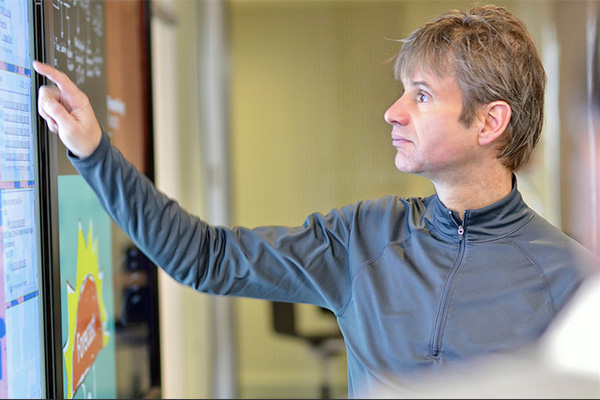
Humans may be able to “see” beyond visible light
to reveal new insights. Photo credit: IBM Research
We could have superhero vision by 2022: IBM
WASHINGTON, January 27, 2017
By 2022, hypervision and AI could lend superhero vision to humans, medical labs could be built on a computer chip and smart sensors would be able to detect pollution, according to IBM Research.
Making the invisible world visible, from the macroscopic level down to the nanoscale, is the theme for IBM’s “5-in-5”, the IT giant’s annual list of predictions that could enable us to dramatically improve farming, enhance energy efficiency, spot harmful pollution before it’s too late, and prevent premature cognitive decline.
Below is a quick overview of 5 in 5 predictions:
With AI, our words will be a window into our mental health. In five years, what we say and write will be indicators of our mental health and physical wellbeing. Patterns in our speech and writing analyzed by cognitive systems will enable doctors and patients to predict and track early-stage developmental disorders, mental illness and degenerative neurological diseases more effectively.
Hyperimaging and AI will give us superhero vision. In five years, our ability to “see” beyond visible light will reveal new insights to help us understand the world around us. This technology will be widely available throughout our daily lives, giving us the ability to perceive or see through objects and opaque environmental conditions anytime, anywhere.
Macroscopes will help us understand Earth’s complexity in infinite detail. The physical world before our eyes only gives us a small view into what’s an infinitely interconnected and complex world. Instrumenting and collecting masses of data from every physical object, big and small, and bringing it together will reveal comprehensive solutions for our food, water and energy needs.
Medical “labs on a chip” will serve as health detectives for tracing disease at the nanoscale. New techniques that detect tiny bioparticles found in bodily fluids will reveal clues that, when combined with data from the Internet of Things (IoT) will give a full picture of our health and diagnose diseases before we experience any symptoms.
Smart sensors will detect environmental pollution at the speed of light. Environmental pollutants won’t be able to hide thanks to new sensing technologies that utilize silicon photonics to accurately pinpoint and monitor the quality of our environment. Together with physical analytics combined with artificial intelligence, these technologies will unlock insights to help us prevent pollution and fully harness the promise of cleaner fuels like natural gas.
“The combination of data explosion and exponential computation growth over the past fifty years has opened up whole new challenges for us to work on and solve together – challenges we never could have tackled or even foreseen in the past. This ‘digital disruption’ is transforming the world around us,” said Arvind Krishna, senior vice president and director, IBM Research.
“As our latest 5 in 5 predictions show, there is no challenge too big – or too small – for us to set our sights on if we’re only bold enough to take the chance,” he added. – TradeArabia News Service







